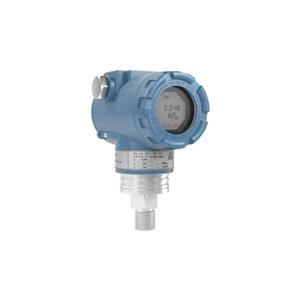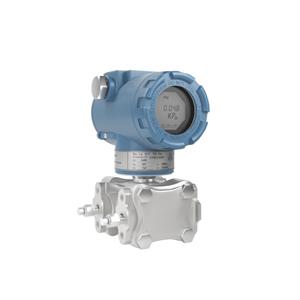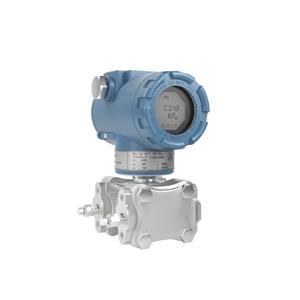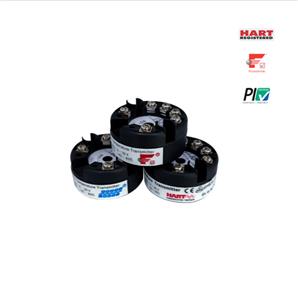Concepto, composición y características del sistema de control por bus de campo.
Primero:El concepto de sistema de control de bus de campo (FCS)
Control de bus de campoes una red informática de área local para el control de automatización de equipos industriales. Se basa en un chip de microprocesamiento con capacidades de detección, control y comunicación, y los instrumentos (equipos) digitales logran un control descentralizado completo en el campo, y utilizan estos equipos de control y medición dispersos en el campo como un nodo de red, y conectan estos puntos en la forma de un autobús. Para formar un sistema de control de bus de campo. Pertenece al sistema de red más bajo y es un sistema de control totalmente distribuido integrado en la red. Distribuye todas las funciones de la máquina de control de campo del sistema DCS distribuido original en cada nodo de la red. Por esta razón, el sistema originalmente cerrado y dedicado se puede convertir en un sistema abierto y estándar. La interconexión de productos de diferentes fabricantes es una actualización del sistema DCS, que simplifica enormemente la estructura del sistema, reduce costos, cumple mejor con los requisitos prácticos y mejora la confiabilidad del funcionamiento del sistema. Los sistemas de control de bus de campo de diferentes protocolos de comunicación generalmente se conectan al segmento de red de bus de campo a través de la placa de interfaz de PC de la ranura de bus en la PC industrial.
Segundo:La composición del sistema de control del bus de campo.
Control de bus de campoEl sistema consta de tres partes: sistema de medición, sistema de control y sistema de gestión. El hardware y software de la parte de comunicación son sus partes más distintivas.
1. Sistema de control de bus de campo:
Su software es una parte importante del sistema. El software del sistema de control incluye software de configuración, software de mantenimiento, software de simulación, software de equipos y software de monitoreo. Primero elija desarrollar software de configuración, controlar y operar el software de interfaz hombre-máquina MMI. A través del software de configuración, se completa la conexión entre los bloques de funciones, se seleccionan los parámetros del bloque de funciones y se realiza la configuración de la red. Durante el funcionamiento de la red, el sistema recopila datos, realiza su procesamiento y cálculo en tiempo real. Control optimizado y control lógico de alarma, monitorización, visualización, informe, etc.
2, sistema de medición Fieldbus:
Se caracteriza por una medición multivariable y de alto rendimiento, por lo que el instrumento de medición tiene más funciones, como la capacidad de cálculo. Debido al uso de señales digitales, tiene alta resolución, alta precisión, fuertes capacidades antiinterferencias y antidistorsión, y también tiene el estado de la información del equipo del instrumento, el proceso de procesamiento se puede ajustar.
3, sistema de gestión de equipos:
Puede proporcionar información de diagnóstico, información de gestión, información del estado operativo del equipo (incluidos medidores inteligentes) del propio equipo y del proceso, e información de fabricación del equipo proporcionada por el fabricante. Por ejemplo, la empresa Fisher-Rosemoune lanzó el sistema de gestión AMS, que se instala en el ordenador host y completa las funciones de gestión. Puede formar una base de datos de información del sistema de gestión integral para equipos de campo y realizar el análisis de confiabilidad y previsibilidad del equipo sobre esta base. mantener. Cambie el modo de gestión pasiva al modo de gestión y mantenimiento predecible. El software AMS es una estructura en forma de T con un servidor local como plataforma. Admite la modularización en el servidor local y proporciona a los usuarios una interfaz gráfica con software de aplicación rico en funciones.
4. Modo de servicio informático del sistema bus:
El modelo cliente/servidor es actualmente el modelo de servicio informático en red más popular. El servidor representa la fuente de datos (proveedor) y el cliente de la aplicación representa el consumidor de datos. Obtiene datos de la fuente de datos y realiza un procesamiento adicional. La máquina de la habitación de huéspedes se ejecuta en un PC o estación de trabajo. El servidor se ejecuta en una minicomputadora o una computadora central y utiliza la inteligencia, los recursos y los datos de ambas partes para completar las tareas.
5. Base de datos:
Puede almacenar una gran cantidad de datos y aplicaciones relevantes de manera organizada y dinámica, realizar un intercambio completo y acceso cruzado a datos y tiene un alto grado de independencia. Durante la operación de equipos industriales, los parámetros cambian continuamente, el volumen de datos es grande y los requisitos de operación y control en tiempo real son muy altos. Por lo tanto, se forma un sistema de base de datos distribuido y en tiempo real al que se puede acceder y operar mutuamente. Los maduros en el mercado son Orad, sybas, Informix, SQL Server en bases de datos relacionales; Infoplus, PI, ONSPEC en bases de datos en tiempo real, etc.
6.El hardware y software del sistema de red:
El hardware del sistema de red incluye: host de administración del sistema, servidor, puerta de enlace, convertidor de protocolo, concentrador, computadora de usuario, etc. e instrumentos inteligentes subyacentes. El software del sistema de red incluye software operativo de red como NetWarc, LAN Mangger, Vines y software operativo de servidor como Lenix, os/2, Window NT. Base de datos de software de aplicación, protocolo de comunicación, protocolo de gestión de red, etc.
ttercero:tlas características decontrol de bus de camposistema
1. Gestión centralizada en función, control descentralizado, descentralizada horizontalmente y jerárquicamente vertical en estructura.
2. Debe tener capacidad de respuesta rápida en tiempo real. Para la red de área local de equipos industriales, su principal volumen de comunicación es la información de procesos y la información de gestión de operaciones. La cantidad de información no es grande y la velocidad de transmisión no es inferior a 1 MPS. La tarea de transmisión de información es relativamente simple, pero de hecho cuando el tiempo de respuesta es superior a 0,01-0,5 S. El llamado rendimiento en tiempo real es la recopilación en línea en tiempo real de parámetros de proceso en el proceso de comunicación de red, el procesamiento en tiempo real de la información del sistema y la retroalimentación rápida al sistema para completar el control del proceso y cumplir con los requisitos de límite de tiempo. de control de procesos. Además de controlar el equipo externo del sistema informático de gestión, también es necesario controlar el equipo del sistema de control de gestión y tener la capacidad de manejar eventos aleatorios. El sistema operativo real debe garantizar un manejo oportuno en condiciones anormales, garantizar la finalización de tareas o completar las tareas más importantes y requerir la detección y corrección oportuna de errores aleatorios, al menos para garantizar que el impacto de los errores no se expanda y debe ser capaz de resistir operaciones incorrectas e información de entrada incorrecta. capacidad.




